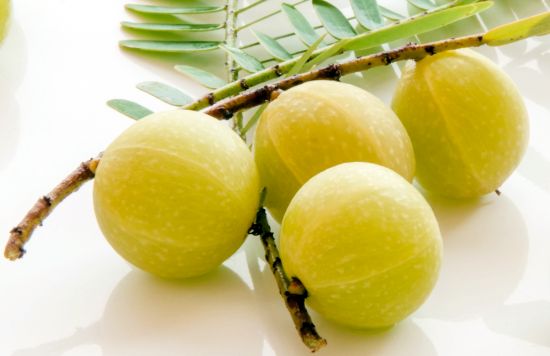India is a country of vast and varied landscapes. The diversity of exotic ingredients that thrive in its differing regions is one of the primary reasons that the cuisine of the country is so extensive and exciting.
Of these ingredients, there are plenty that we might recognise and appreciate here in the UK, such as mango, coconut, cauliflower and the distinctive spices that create the signature flavour of many Indian dishes. But there is also list of wholly unusual items that, although we might not recognise them from our western kitchens, nevertheless form an integral part of the Indian menu. Produce such as jackfruit, bimbli and chironji are used frequently in Indian cuisine – dishes that utilise these unusual flavours often form the inspiration for recipes featured on the menus of some of London’s best Indian fine dining restaurants.

Introducing Amla
One of our favourite Indian ingredients has to be the nutritious, delicious and amazing amla. The amla is a small, green fruit, known to be a form of Indian gooseberry that grows on a crooked tree, decorated with greenish yellow flowers.
This fruit has been long prized for its incredible health-boosting properties. In fact, Ayurveda, the ancient Hindu art of natural medicine, has utilised the humble amla for centuries, prescribing tonics and ointments to remedy ailments from throat inflammations to thinning hair.
Amla is most often cooked into rice or as the key ingredient in mouth-watering chutneys and pickles, although it can also be consumed sweet with sugar syrup and dessert spices such as cardamom.
The Health Benefits of Amla
First of all, amla is an excellent source of vitamin C with a higher concentration of this potent, healing substance than even that found in oranges. This means that your immune system will be strengthened immeasurably with daily doses of amla, protecting you from illnesses and exhaustion.
These little fruits are also renowned for being rich in antioxidants. Antioxidants are present in many superfoods – they protect the body from free radicals, dangerous substances which can damage cells and lead to cancer.
Although Indian food is delicious and irresistible, some of the ingredients can be a little hard on our digestive systems, particularly super spicy dishes or dishes that are especially rich. Cue amla and its digestive powers – the fruits have a gentle, soothing affect on the digestive system as well as assisting the body in the absorption of nutrients.
The Indian gooseberry is also considered to be excellent at flushing out toxins, helping the liver and kidneys to do their jobs effectively whilst Indian women swear that amla helps to relieve menstrual cramping at that uncomfortable time of the month.
Finally, this innocuous yet powerful fruit has been hailed as a beauty product and is considered to promote thick, youthful and lustrous hair growth as well as purifying the body to reduce skin complaints, such as acne.
So, if you see a dish on the menu that incorporates the Indian amla, be sure to sample this wonderful fruit – your health and appearance will thank you for it.

